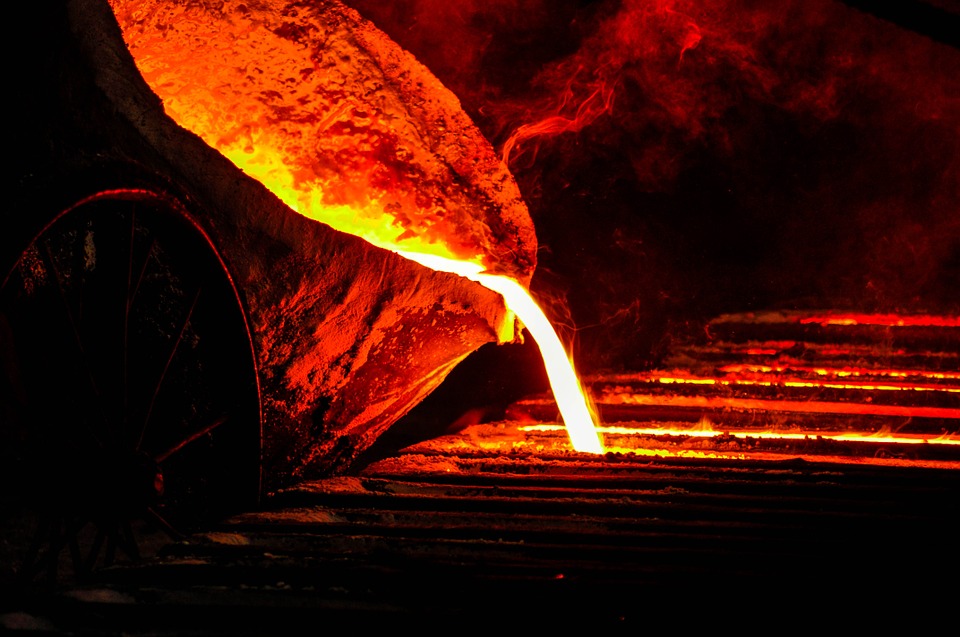When does steel melt?
The influence of the alloy on the melting range of steel
Carbon steel is the most important type of steel with a global market share of around 80%. This steel is used for general building construction and steel bridge construction and is unalloyed (less than 2% alloy content). It consists mainly of iron and a maximum of 2% carbon. The melting points of these two substances can be given precisely: iron melts at 1536°C and carbon at 3550°C. By the way concrete melts at temperatures between 1150°C and 1200°C.
There are also other steels that are alloyed, such as stainless steel or tinplate. The metallurgists can use different alloys to adjust the steel properties. Tinplate is for example used to manufacture food cans. Therefore it is very soft and can be deformed excellently. In contrast, carbon steel is strong and ductile. Due to the different alloy proportions, the melting point shifts within the temperature range given above.

At what temperature does steel melt?
Since steel always consists of different components, there is no fixed melting point. The melting range of steel is between 1425°C and 1540°C. The exact melting point depends on whether the steel is unalloyed or alloyed and therefore fluctuates within this temperature range.
At what temperature does stainless steel melt?
Metallurgists manufacture stainless steel mostly from a combination of the following alloying elements. The list also shows the melting points of the individual alloy elements:
- Chromium: melting point 1907°C
- Molybdenum: melting point 2623°C
- Titanium: melting point 1668°C
- Niobium: melting point 2477°C
- Tungsten: melting point 3422°C
- Vanadium: melting point 1910°C
- Cobalt: melting point 1,495°C
As can be seen, the melting point of all alloy elements (except for cobalt) is well above the melting range of carbon steel. As discussed above, carbon steel melts between 1425°C and 1540°C. The high melting temperatures of the alloy components of stainless steel mean that most of the technical literature indicates the melting range of stainless steel with approximately 1500°C rather in the upper range of this range.
What does the high melting temperature mean in the event of a fire?
Given the high melting temperature of structural steel or stainless steel, the impression could arise that steel structures are relatively safe in the event of a fire. This is unfortunately not the case! If you are interested in this topic, we recommend the following articles. If you have any further questions, please do not hesitate to call us or send us an email.
- The big disadvantage of structural steel: its high thermal conductivity.
- What temperatures are reached in different fires? You can find information on different fires in my Infotheque (section "Fires").
- Why are structures made of structural steel increasingly unstable in the event of a fire?